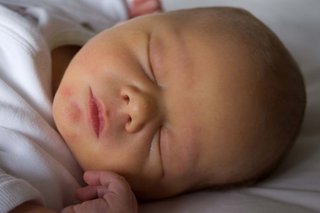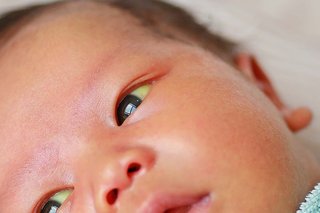Symptoms of newborn jaundice
If your baby has jaundice, their skin will look slightly yellow.

Changes in skin colour can be more difficult to see if your baby has brown or black skin.
Yellowing may be more obvious elsewhere, such as:
- in the whites of their eyes
- inside their mouth
- on the soles of their feet
- on the palms of their hands

The yellowing of the skin is usually more noticeable on the head and face.
The yellowing may also increase if you press an area of skin down with your finger.
A newborn baby with jaundice may also:
- be sleepy
- not want to feed or not feed as well as usual
- have dark yellow pee (it should be colourless)
- have pale poo (it should be yellow or orange)
Jaundice usually appears about 2 days after birth and disappears by the time the baby is 2 weeks old.
In premature babies, who are more prone to jaundice, it can take 5 to 7 days to appear and usually lasts about 3 weeks.
It also tends to last longer in babies who only have breast milk, affecting some babies for a few months.
When to get medical advice
Your baby will usually be examined for signs of jaundice within 72 hours of being born as part of the newborn physical examination.
If your baby develops any signs of jaundice after this time, speak to your midwife, health visitor or a GP as soon as possible for advice.
In most cases, jaundice is harmless and is not a sign of an underlying condition.
It usually clears up on its own by the time a baby is 2 weeks old.
While jaundice is not usually a cause for concern, it's important to determine whether your baby needs treatment.
Page last reviewed: 03 February 2022
Next review due: 03 February 2025